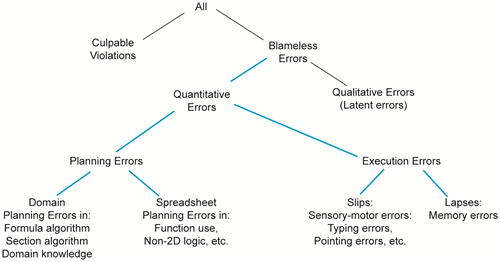Authors
Raymond R. Panko & Salvatore Aurigemma
Abstract
Error taxonomies are useful because different types of errors have different commission and detection rates and because error mitigation techniques often are only useful for some types of errors.
In the early 1990s, Panko and Halverson developed a spreadsheet error taxonomy. This paper updates that taxonomy to reflect human error research more fully. The taxonomy focuses on quantitative errors during development and testing but notes that qualitative errors are very important and that errors occur in all stages of the system development life cycle.
Sample

The taxonomy divides errors into violations and innocent errors.
Most errors are innocent, but some are deliberate violations of corporate standards or guidelines for spreadsheet development.
Worse yet, some spreadsheets have more serious violations, such as outright fraud or puffery.
Publication
2010, Decision Support Systems, Volume 49, Number 2, May, pages 235-244
Full article
Revising the Panko-Halverson taxonomy of spreadsheet errors
Also see
Revisiting the Panko–Halverson taxonomy of spreadsheet errors
